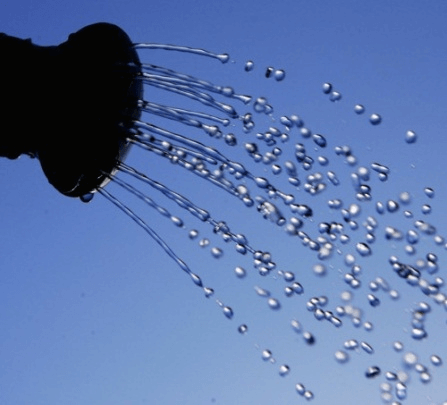Without water, gardens can’t thrive
The soil is dry and the plants are thirsty. Your automatic irrigation system shouldn’t lead you to complacency. The evaporation rates have soared due to this high heat and humidity. This means that more water is being absorbed into the air than it is into the soil.
So, finally, several towns received some rain. Many people will think, “Great, I’m off my hook!”
But not so quickly. Not even one rain storm, especially after extreme heat, can solve the problem. This water will either evaporate into the dry air, or run off to the deserted land. To reverse this dry spell, we need regular and frequent rain events.
The good news is that if it rains at night with the sun setting, water has a greater chance of getting settled in the soil. Your soil will absorb more water if you water before the event. You can water your soil after the event. Primed soil means more water intake. Regular watering is a must, even multiple times per week for very dry areas.
Hand water
Recognizing that many towns have a water ban that must be observed, please be careful about how you water. This usually means that you will need to use a hand-held hose or a watering can to reach the plants in pots. If you live in a town with a water ban, recycle water from your household.
Gray water
Although “gray water” is controversial, it is still a viable option for water. Use environmentally safe dish soap to wash dishes. Instead of wasting your dirty water, collect all the rinse water. This water will be low in surfactant, and can be recycled into the landscape. It is perfectly fine to use landscape water with low levels salts or soap in it. Although the jury is still out about laundry water, some areas have accepted its use.
You should water any annuals you have planted this summer. Before you water, make sure to check the soil. If they haven’t been watered since planting (and aren’t dead yet), water them now. Don’t let your plants suffer. They can’t just get in the car to have a smoothie.
These plants might need your attention if you have a new planting of sod or trees or shrubs, perennials, or ground covers. Although irrigation systems can be effective in maintaining soil moisture, they cannot manage drought. It is important to go outside and inspect your plants. They will communicate their needs by the way they look. Are they looking tired? Are the tips turning brown? Are the leaves turning brown? They may also be thirsty.
Garden watering tips
A watering wand can be a great way of delivering a steady stream to your plants. The water should be directed at the base of your plant. Watering the soil is not for the plant.
Water runoff is a serious problem! Be sure that the water is fully absorbed. This means that you should take your time. To remove the mulch or soil crust, you can use a cultivator.
You can water the plant once you have done that, and then move on to the next one. Next, go back to the beginning and repeat. It is more difficult to absorb all the nutrients from the soil if it is extremely dry. It will make a big difference to go over the same area twice or three times.
Plants that are already dehydrated should not be fertilized. You can water them until they appear lush and perky again. It is then safe to fertilize. The same applies to lawns. It doesn’t make sense to spend money on a lawn that isn’t in good condition.
Do not water during the heat of the day. Watering should be done in the morning, ideally before 9am, or evening, preferably after 5pm. If you find a very sad plant, don’t be discouraged if it is high noon. Water it. Focus the water on the base. Dig into the soil to get the water deep. Next, water it regularly.
Spray the entire plant, not just the leaves. Spray the soil and not the leaves, especially if you have plants susceptible to fungus such as roses, peonies or lilacs.
Feel overwhelmed by the drought and summer heat? Post your question or comment. Let’s have a discussion about watering, and the frustrations that come with keeping up with the landscape’s demands – especially during this heat.

